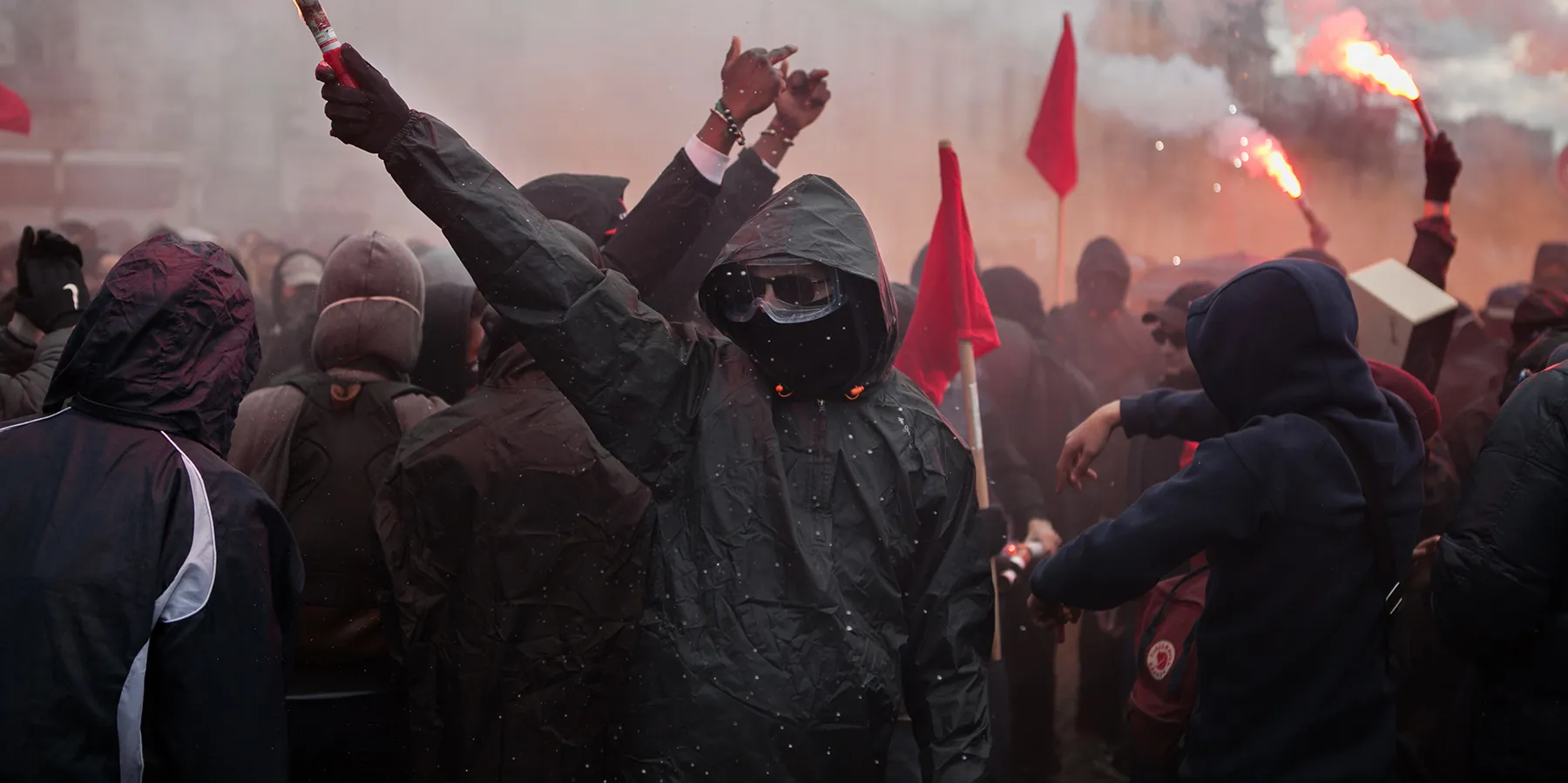By Maria Koulourioti,
“Pour les Retraites” is the phrase that dominates the streets, the banners, and the voices of the French people. Meaning “for the pensioners”, over the last few weeks, Paris has been set on fire, expressing the rage and the denial of the citizens towards President Emmanuel Macron, who let a last-minute decision occur to avoid a parliamentary vote, pushing through his unpopular plan to raise the pension age from 62 to 64. Macron was still conducting several hurried talks with key politicians minutes before the lower house vote. Then, he decided to exercise extraordinary powers rather than risk a vote, that he would lose. In particular, he chose to use constitutional provision 49.3, which allows the executive branch to override the legislative branch. Protests have been relatively calm, especially those involving children, university students, and workers. However, with the publication of Macron’s rash and injudicious resolution, chaos covered not only the City of Lights but every region in France. And a certain group had been excessively asserting their presence in these once peaceful protests. Who were the people in black who still dominate the news coverage of French protests?
The black bloc is a violent anarchist protest group that has spread around the world, with its main goal being to undermine the influence of governments and financial institutions in the global system. The black bloc is more of a “technique” than it is a unified entity. Groups of demonstrators cover their identities by donning helmets and all-black attire before forcefully confronting icons of capitalism and power. Intending to take direct action against police brutality, economic inequality, and other perceived injustices, the protest movement started in Germany in the 1970s. Concerning their protest strategies, West Berlin police gave them their moniker in the 1980s; the English phrase is a translation of the German “Schwarzer Block.” Moving to the head of the March was a tactic used at the time by activists in the non-hierarchical Autonomist movement opposing squatter evictions to maintain anonymity, defend one another, and confront the police or start property destruction.
Black Bloc gained international attention in April 2000, when the “Radical Anti-Capitalist Blocs” (RACB) joined protests in Washington, D.C., against the IMF and the World Bank. Through internet forums and anarchist blogs, it has subsequently expanded globally. As they use black bloc tactics to demonstrate against monetary and political power symbols, protestors have no formal structure, and cells are often transient. The black bloc has been strongly associated with anti-Trump demonstrations in the US and Germany during the 2017 G20 summit. Following violent black bloc protests during the 2017 G20, German lawmakers from all political perspectives called for a renewed emphasis on Europe’s radical left. During the summer of 2020 anti-police rallies, courthouses, prison building sites, and other symbols of authority and capitalism in the United States were targeted by protesters who especially targeted emblems of capitalism.

In France, Black blocs are nothing but expected. Smashing windows, breaking in stores, torching bins, and confronting police, are some of the features that any French local would anticipate in the next significant protests. And perhaps not even a significant motive is needed. Black blocs frequently react as such, because, French police enjoy using tear gas. They have been violent towards journalists covering demonstrations, especially those from right-wing media, although they extremely seldom use violence toward members of the public and, ironically, pose minimal threat to onlookers. There were reportedly 800 “pure members” of the Black Bloc in 2020, according to French intelligence sources, although at least 1,000 people took part in a May Day rally in 2018. However, the group’s actual size is unknown, since they communicate through secure channels like Signal, where their identities can be protected. One tactic involves scattering and running off in different directions after causing destruction, making it challenging for police to make arrests or identify them.
The majority of people concur that the persons in black are not merely protesters since they arrive well-prepared with their faces covered, gas masks or goggles to shield them from the expected police tear gas, tools, or handmade incendiaries. Some view them as radical Leftists, opponents of capitalism, or Marxists, while others view them as troublemakers just out to cause mayhem. Although not originally French, they have gained increased notoriety in France in recent years, notably for the havoc caused during the “yellow vest” demonstrations of 2018–19 along the Champs-Elysées, the upscale fashion and retail boulevard. According to, experts on the subject, Black Bloc first appeared in France in 2009. During the NATO meeting in April 2009, hundreds of protestors gathered in Strasbourg to voice their opposition to the alliance.
And, in the end, who is behind the mask? Francis Dupuis-Deri, a political scientist, characterized the modern Black Bloc as “a procession of revolutionary militants dressed in black who are likely to resort to direct action.” Myriam Benraad, a different political scientist, claimed that Black Bloc militants in the 1980s “were fairly educated People,” frequently academics. In more recent years, many French people have stereotyped them as “teacher’s sons” — basically, young people from the middle class who briefly participate in violent protest and far-left politics before moving into the professional classes. However, it is difficult to get a clear picture of who joins the Black Bloc; it appears that the population is more diverse than this impression, although the movement is often young, and that participants appear to be largely white in news images.
Some may view the Black Blocs as kids who have not yet matured, while others perceive them as prophets and carriers of a century-year-old ideology. One thing is for certain; the failure of attempts to maintain freedom does not mean that the cause is lost.




